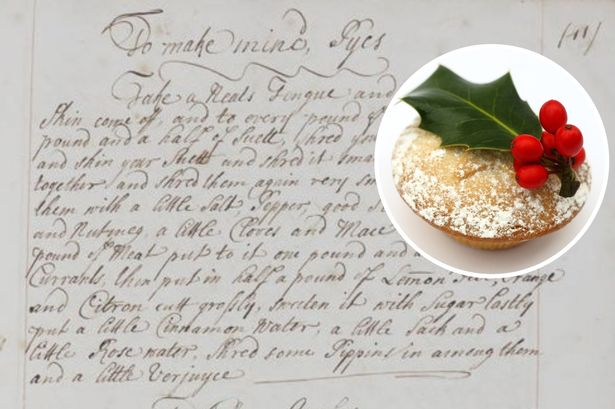Newcastle University Library archivists have uncovered a mince pie recipe from 1733.
The recipe book is part of the Blenkinsopp-Coulson (William) Archive. William Lisle Blenkinsopp Coulson (1841-1911) was a prominent figure in Newcastle upon Tyne, establishing the Newcastle Dog and Cat shelter at Spital Tongues.
The recipe was recorded by Jane Blenkinsopp Coulson, who lived in the Jesmond area at the time she compiled the recipe book.
Geraldine Hunwick, Senior Archivist, Special Collections & Archives, Philip Robinson Library, explained: “Jane’s family, the Blenkinsopp family, had held the ancient manor of Blenkinsopp in Northumberland from the 13th century. Jane was the sole heiress to the manor and in 1727 she married William Coulson of Jesmond. As far as we know, they then went on to reside in Jesmond, as by 1832 Blenkinsopp Castle was in complete disuse”
To make Minced Pyes
- Take a Neats Tongue and boil it till the skin come off, and to every pound of meat put to one pound and a half of Suett
- Shred your tongue small and skin your Suett and shred it small then mix them together and shred them again very small then season them with a little Salt, Pepper, good Store of Cinnamon and Nutmeg, a little Cloves and Mace
- To every pound of Meat put to it one pound and a half of Currants, then put in half a pound of Lemon Peel, Orange and Citron cut grossly
- Sweeten it with Sugar lastly put a little Cinnamon on Water, a little Sack and a little Rose water, Shred some Pippins in among them and a little Verjuyce
You may not know all the words in the recipe
Neat: archaic regional term for a bovine animal; an ox or bullock; a cow or heifer.
Grossly: coarsely (Now obsolete).
Sack: general name for a class of white wines formerly imported from Spain and the
Canaries. (Now obsolete).
Verjuice: The acid juice of green or unripe grapes, crab-apples, or other sour fruit, expressed and formed into a liquor; formerly much used in cooking.







